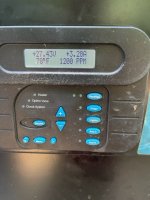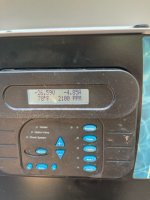If you have a SWG, you *need* to get your own salt test. Taylor K-1766 is a good one. Use that to cross-check the cell.
As Mark pointed out, be sure to check that your cell doesn't have scaling.
If the cell has no scaling, and you truly have 3700PPM salt (which is high for a Hayward system, which is what yours really is--you just have an aftermarket cell), then the cell is probably failing. 3500PPM is really the max for this system. If the cell is failing, you need to drain and replace some water to get the salt around 3200PPM before installing a new cell (otherwise you risk causing damage to the board or at least blowing a fuse from high amps).
I'm guessing the reason your pool salt is high is that the unit kept telling you that your salt was low & you added salt to try and satisfy the system. That is typically what happens. You need to get in the habit of checking your salt level independently before adding any salt. Even better, check salt regularly (at least once a month) using a salt test, so you can see any issues coming.
The Hayward system estimates salt concentration via measured volts, amps, and temperature at the cell, along with the cell model (I think yours is a clone of the T-15)--which is essentially "how big are the plates and how many are there?"
Because it's not using an independent conductivity probe, but using the cell characteristics, it is not an independent view of the salt content. It will be affected by scaling, and cell life. Once the cell "instant salt" reading on a *clean* cell is 75% or lower than the actual pool salt reading, the cell can be assumed to be failing.





